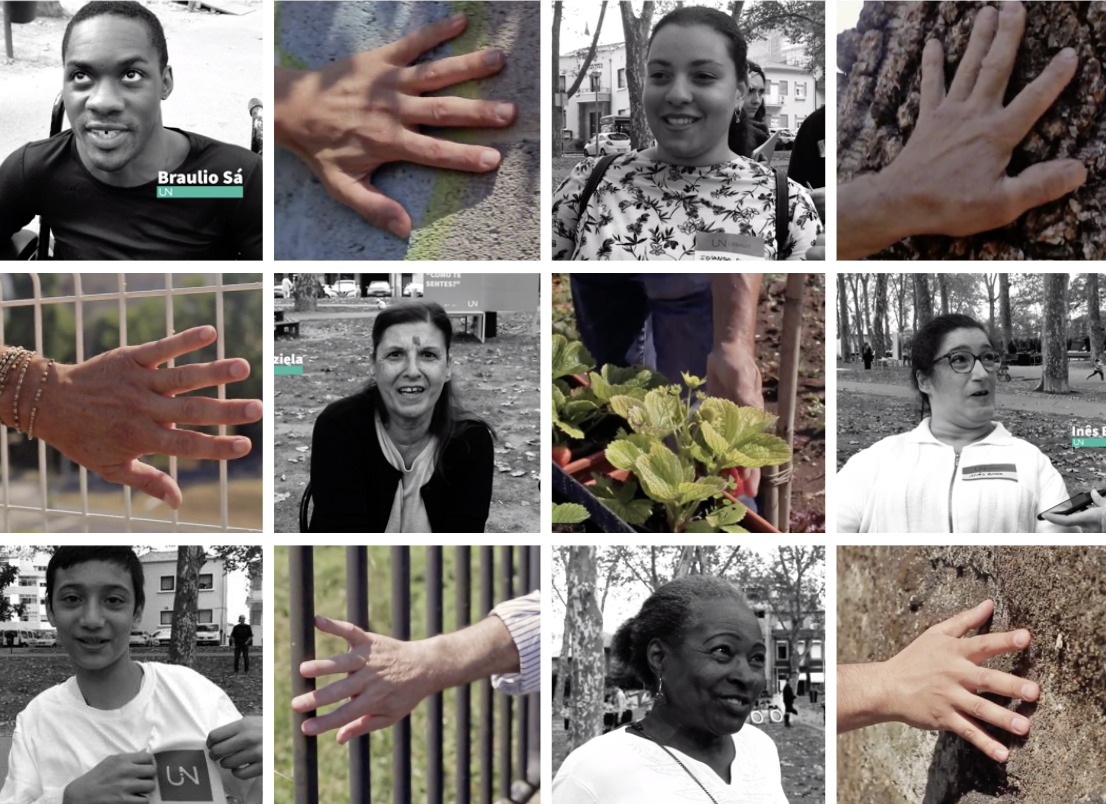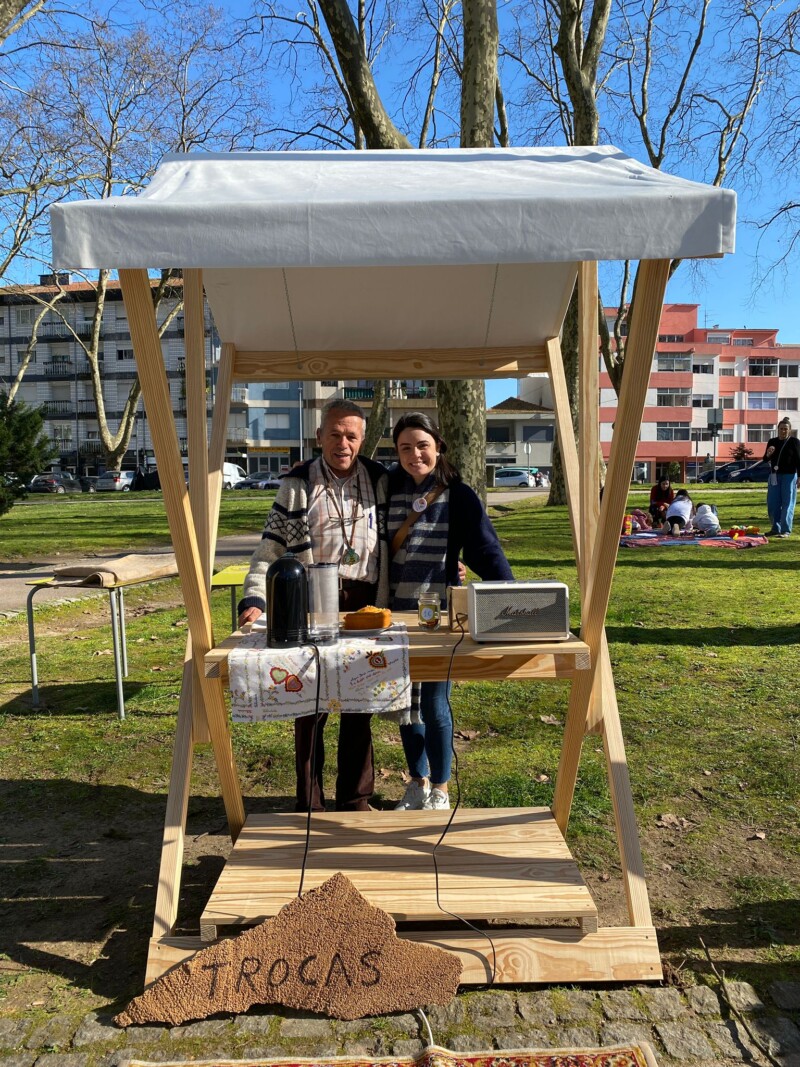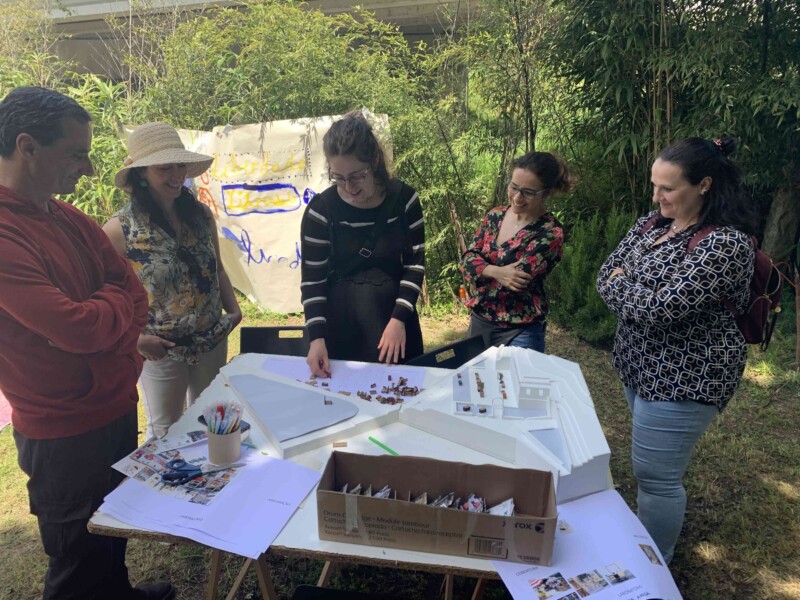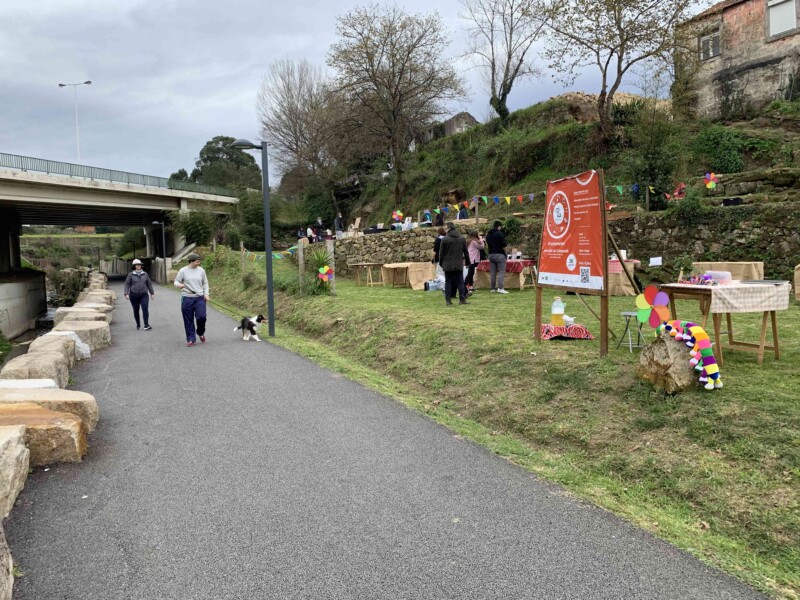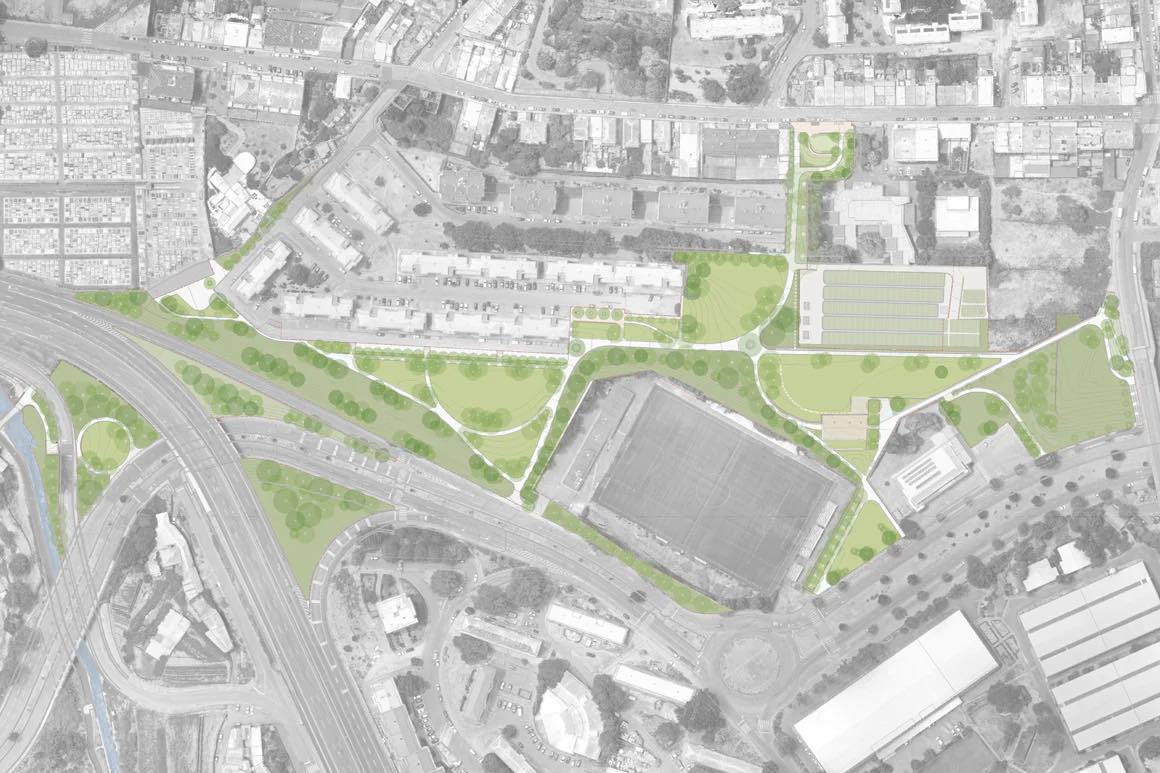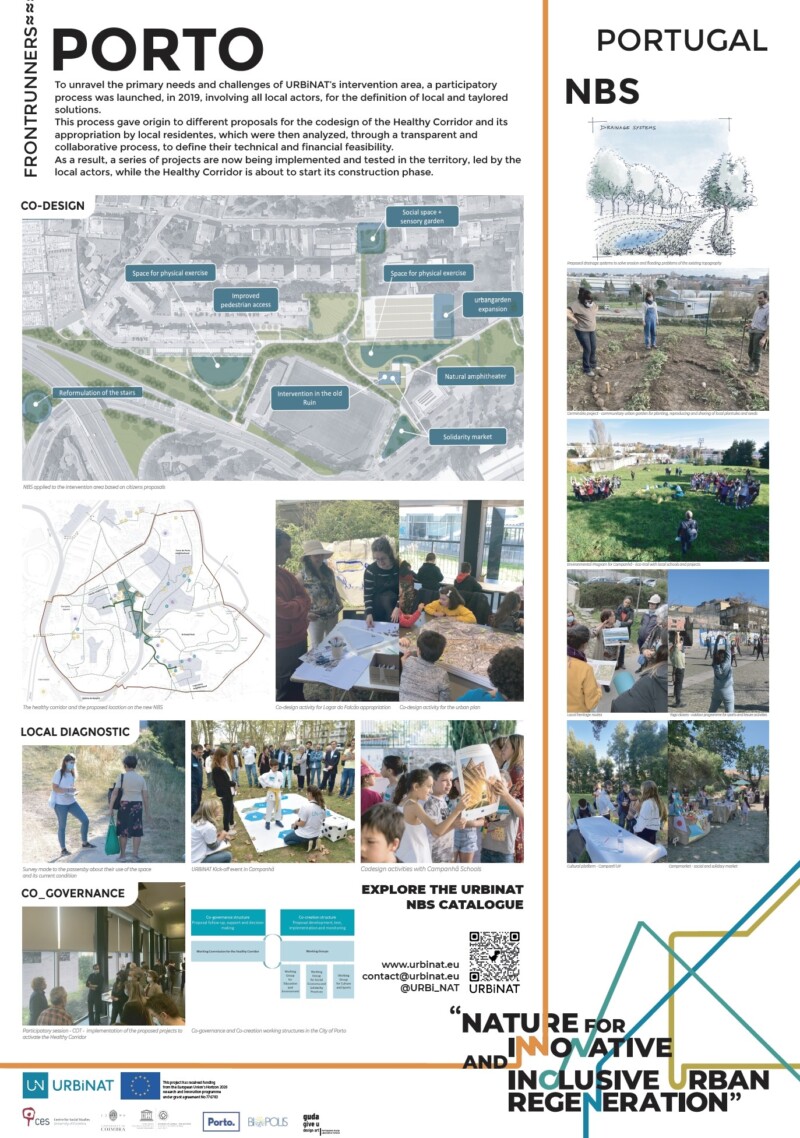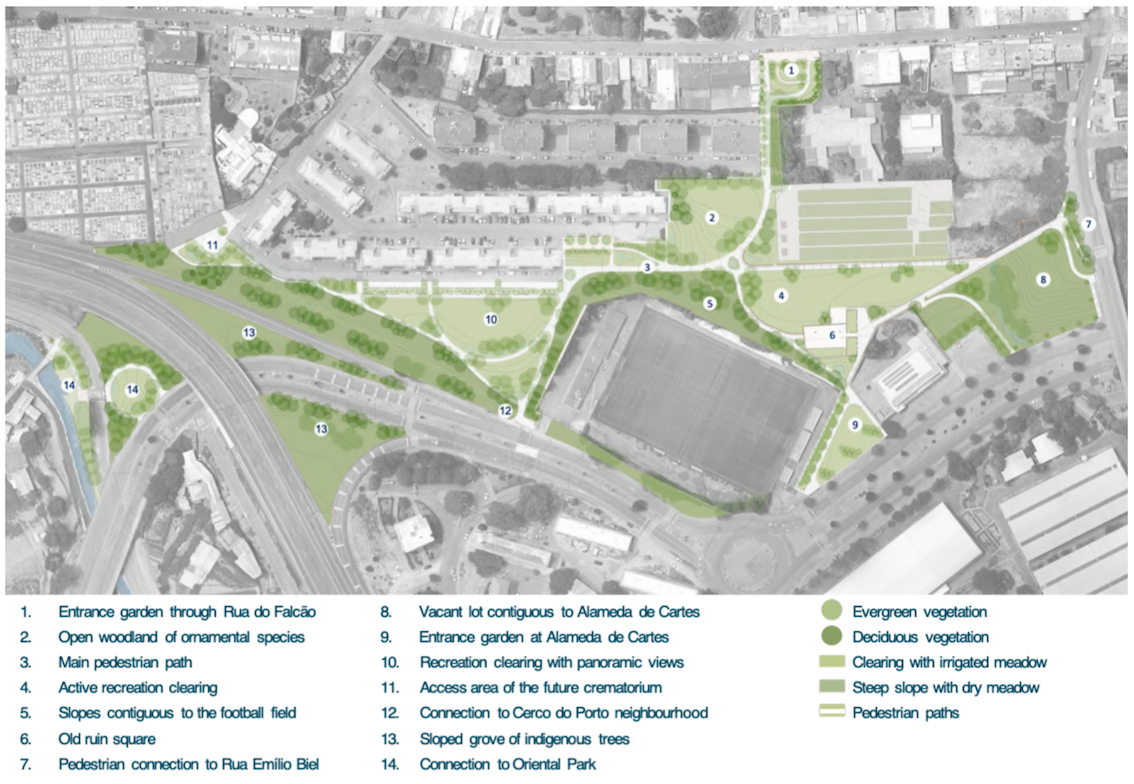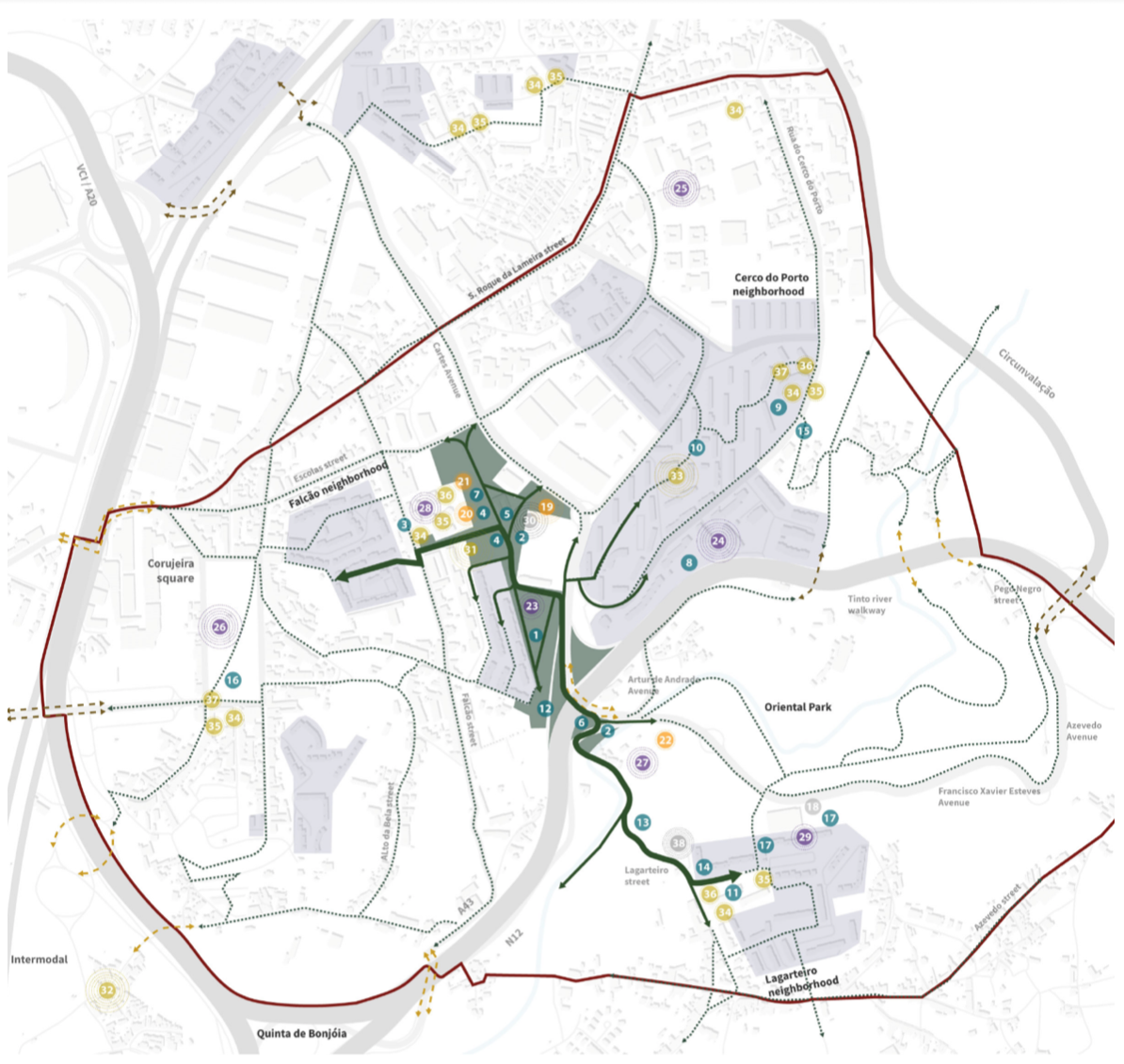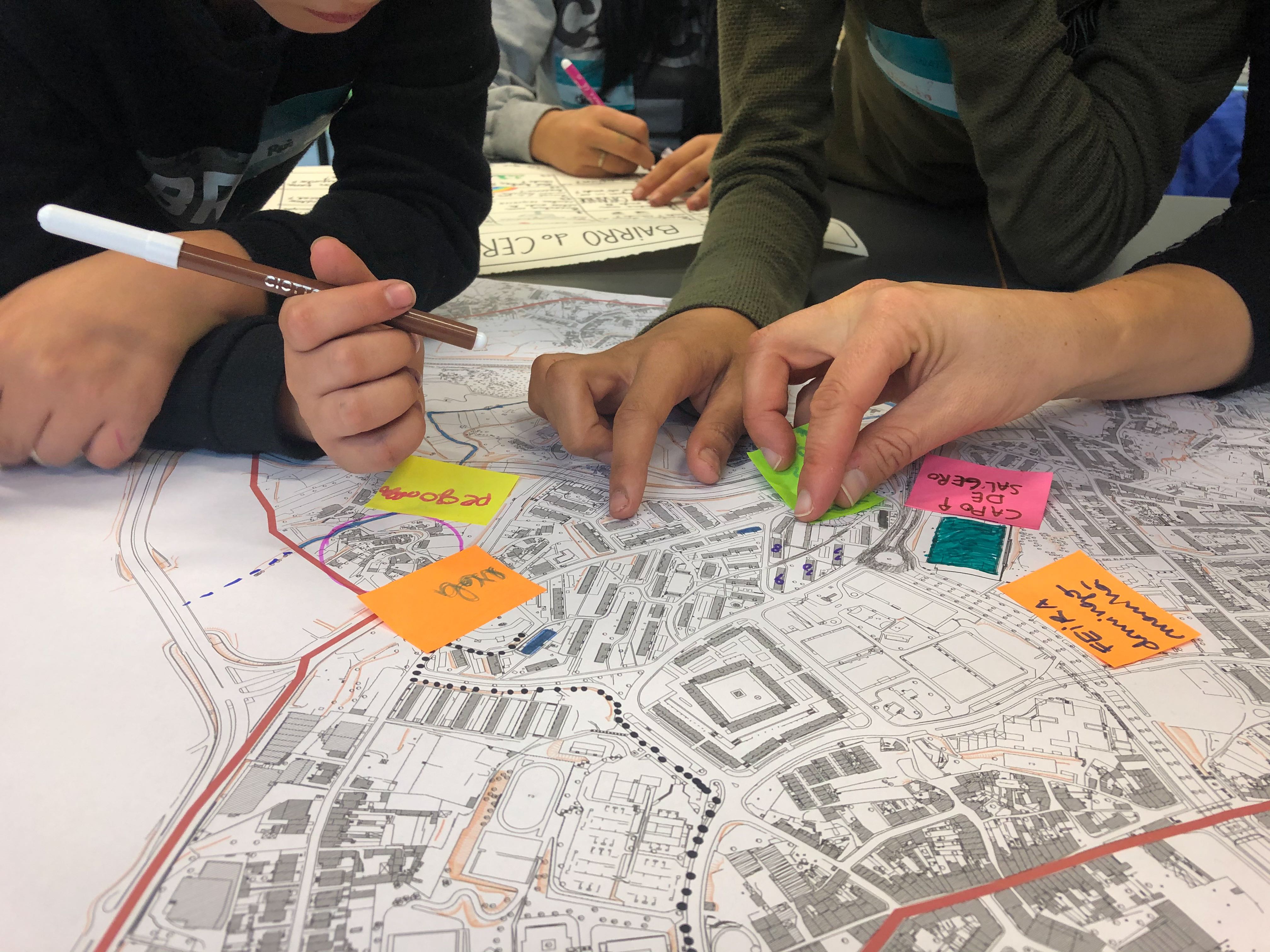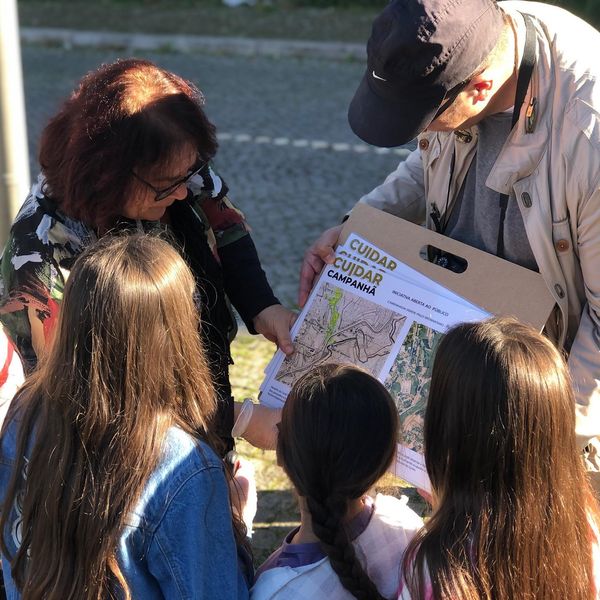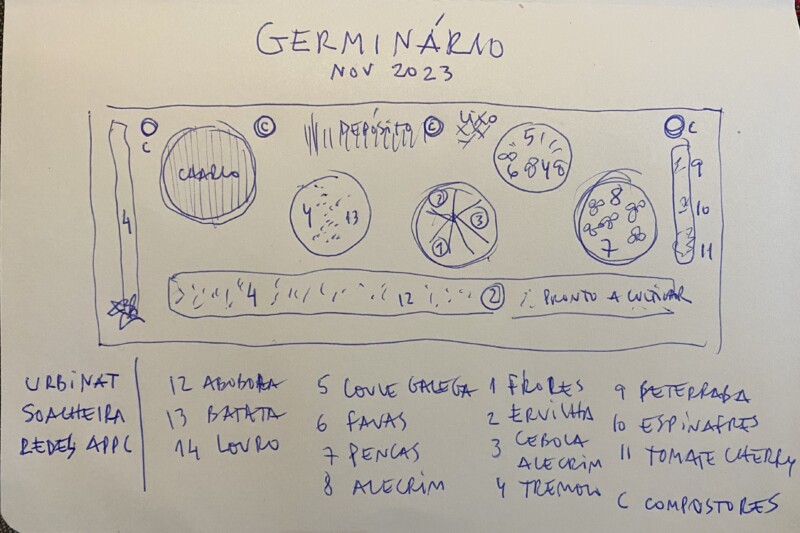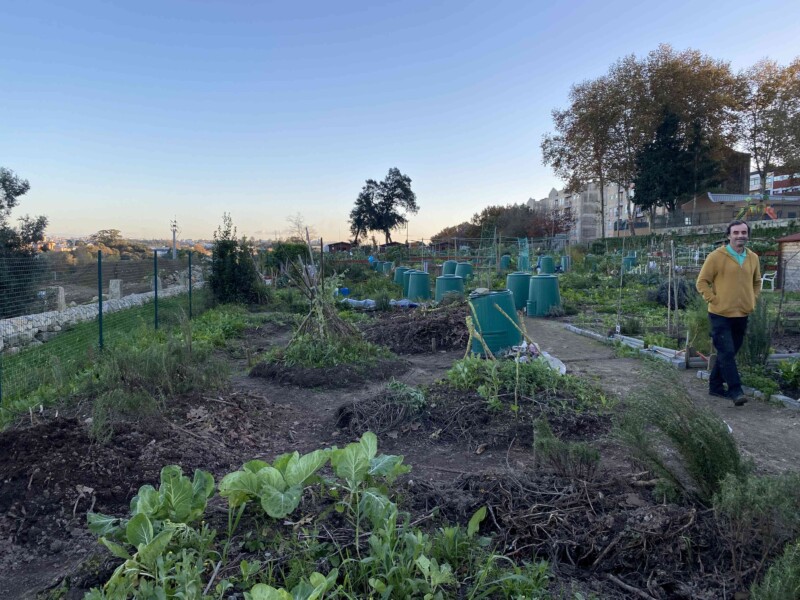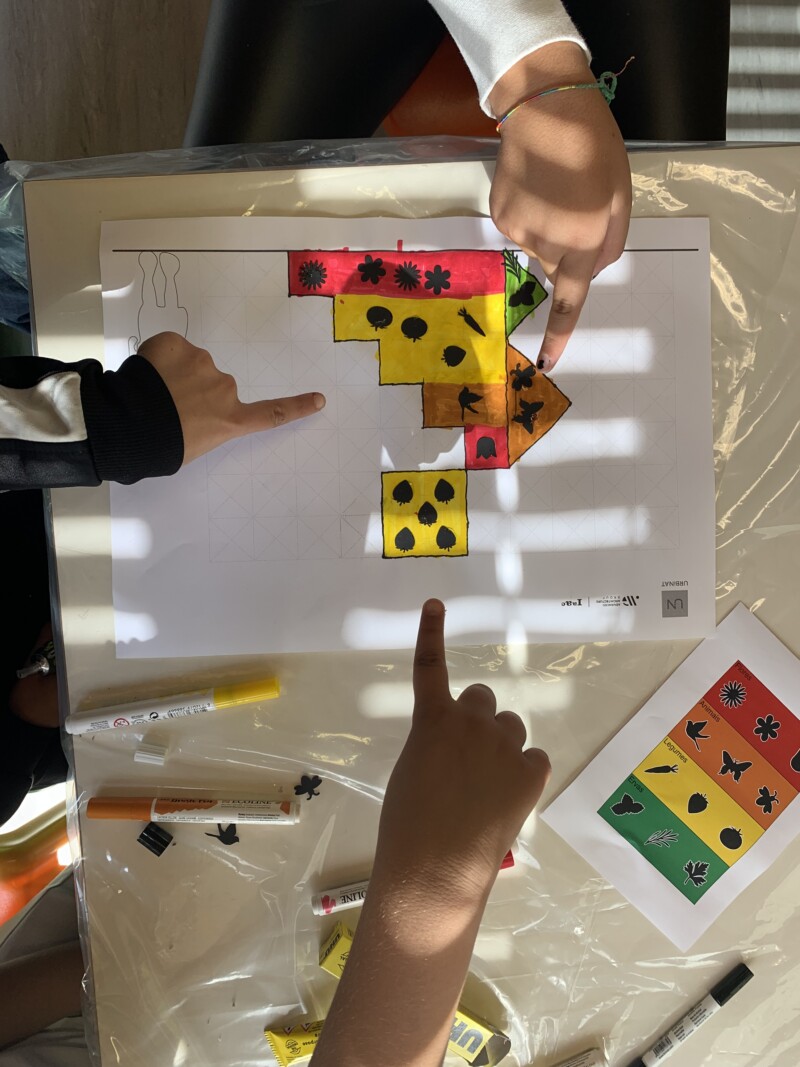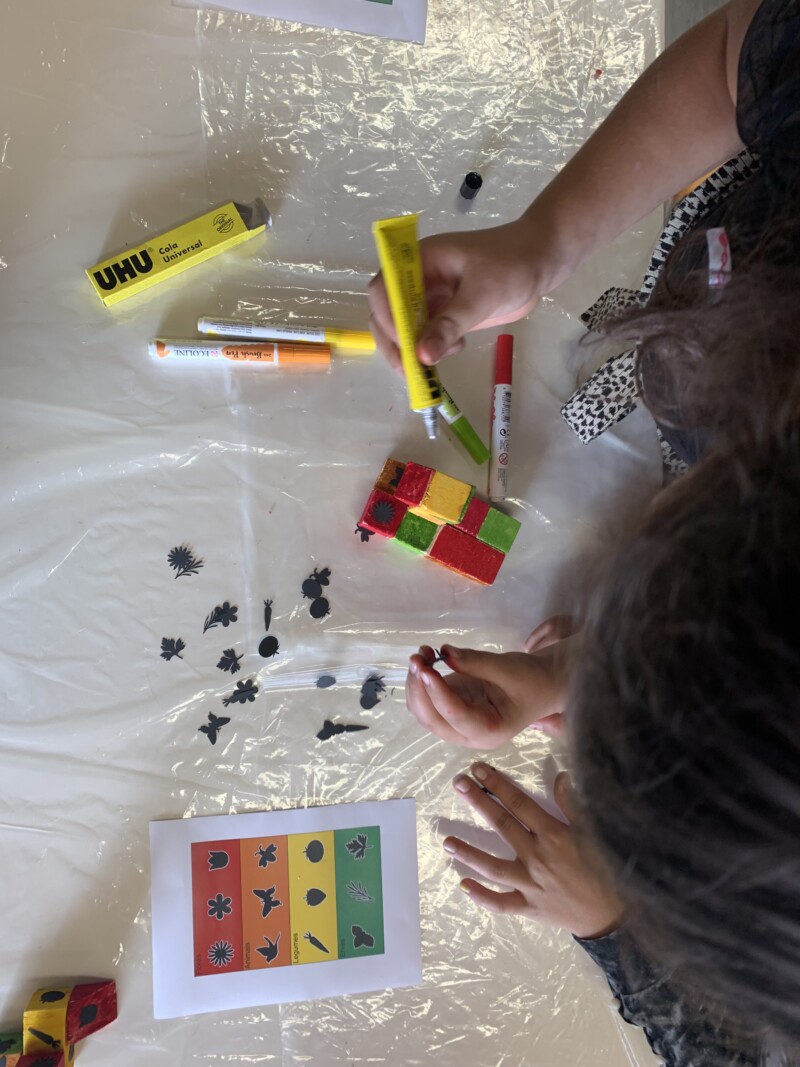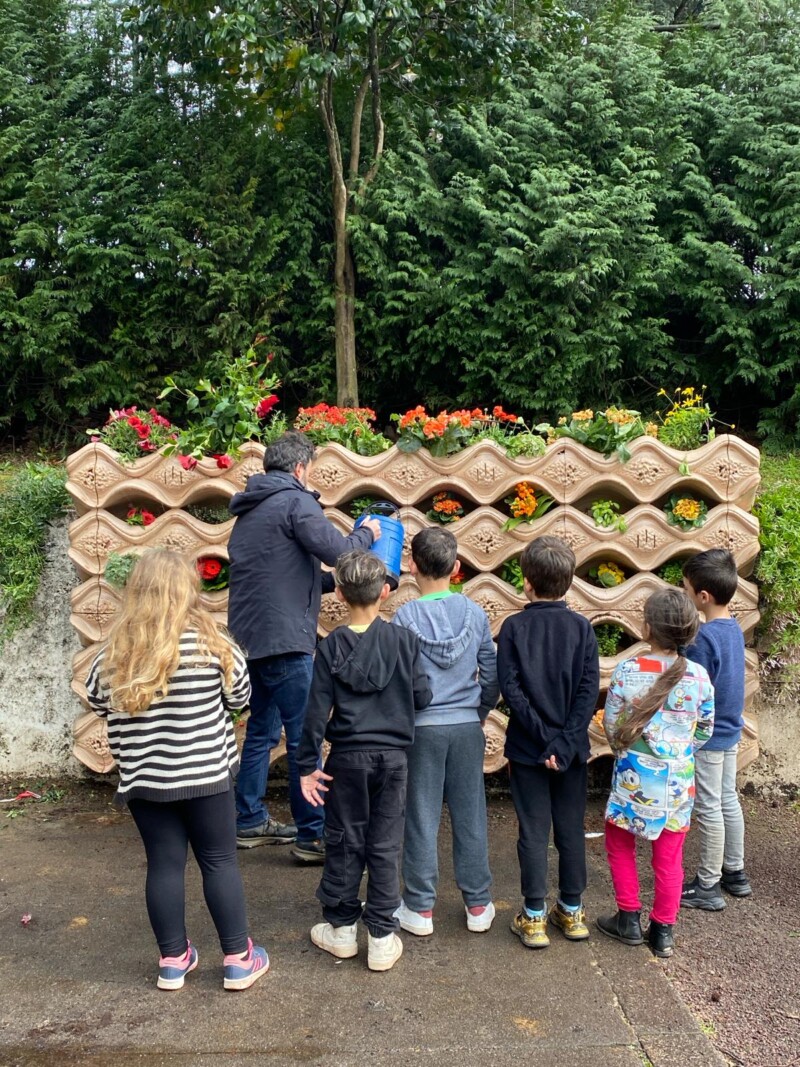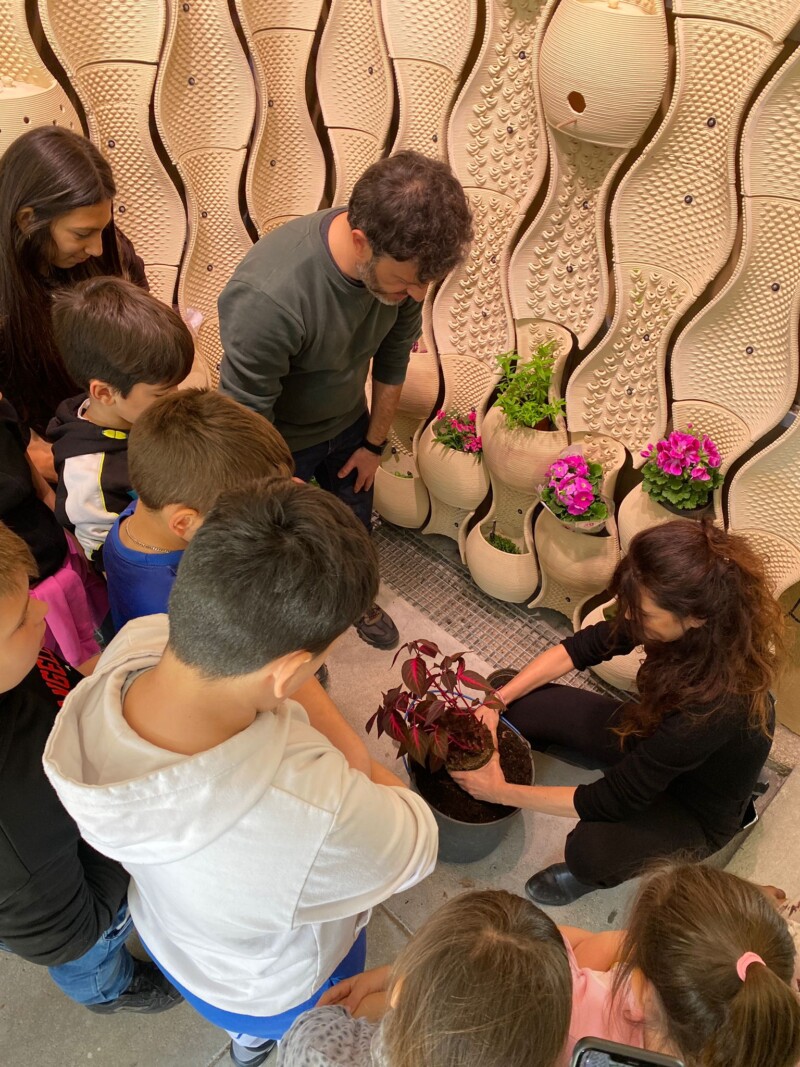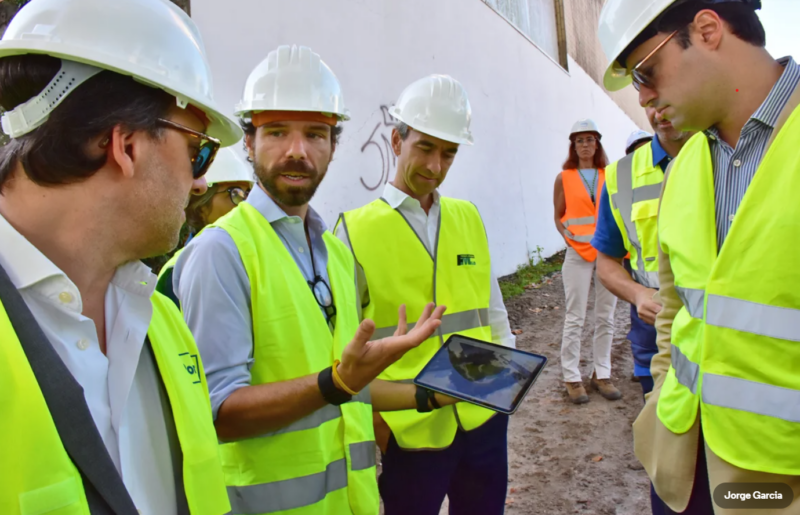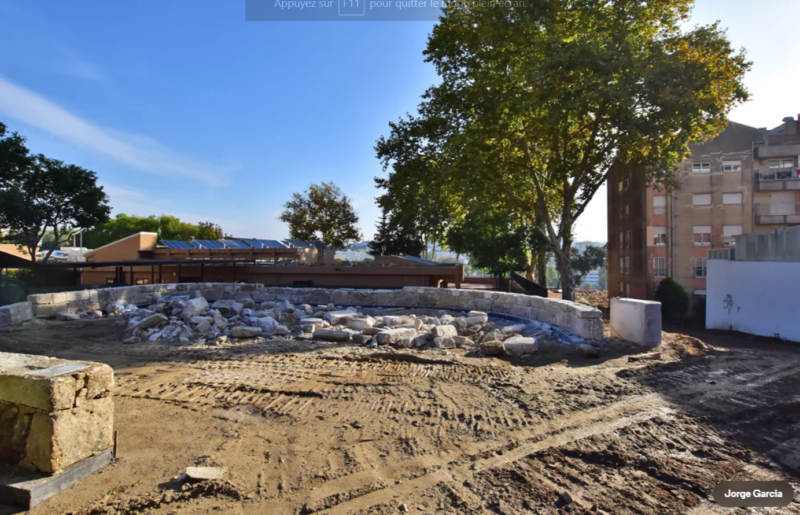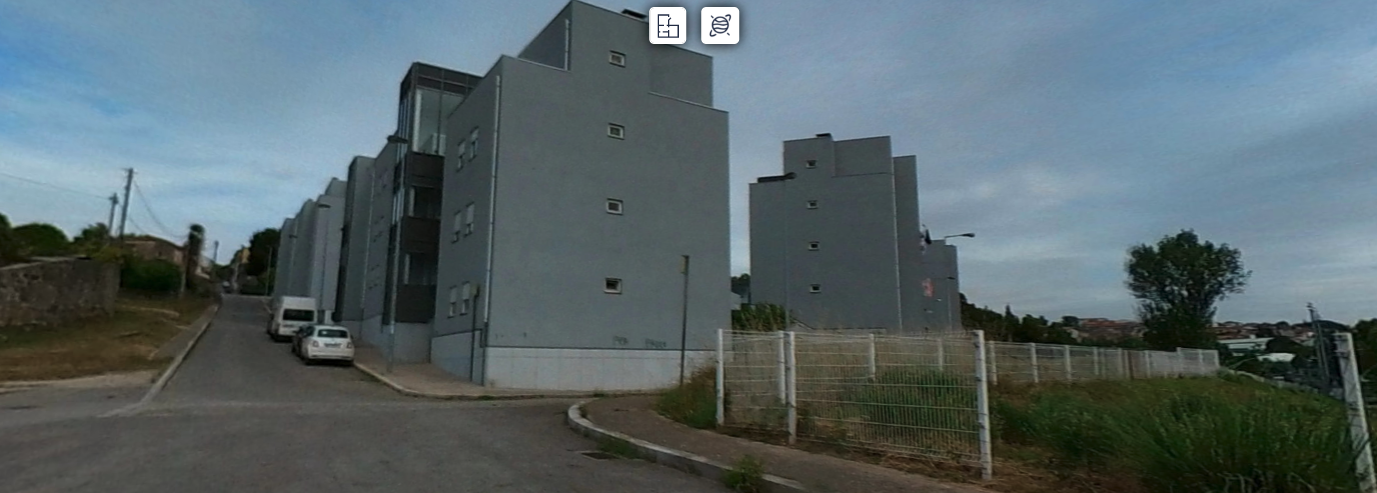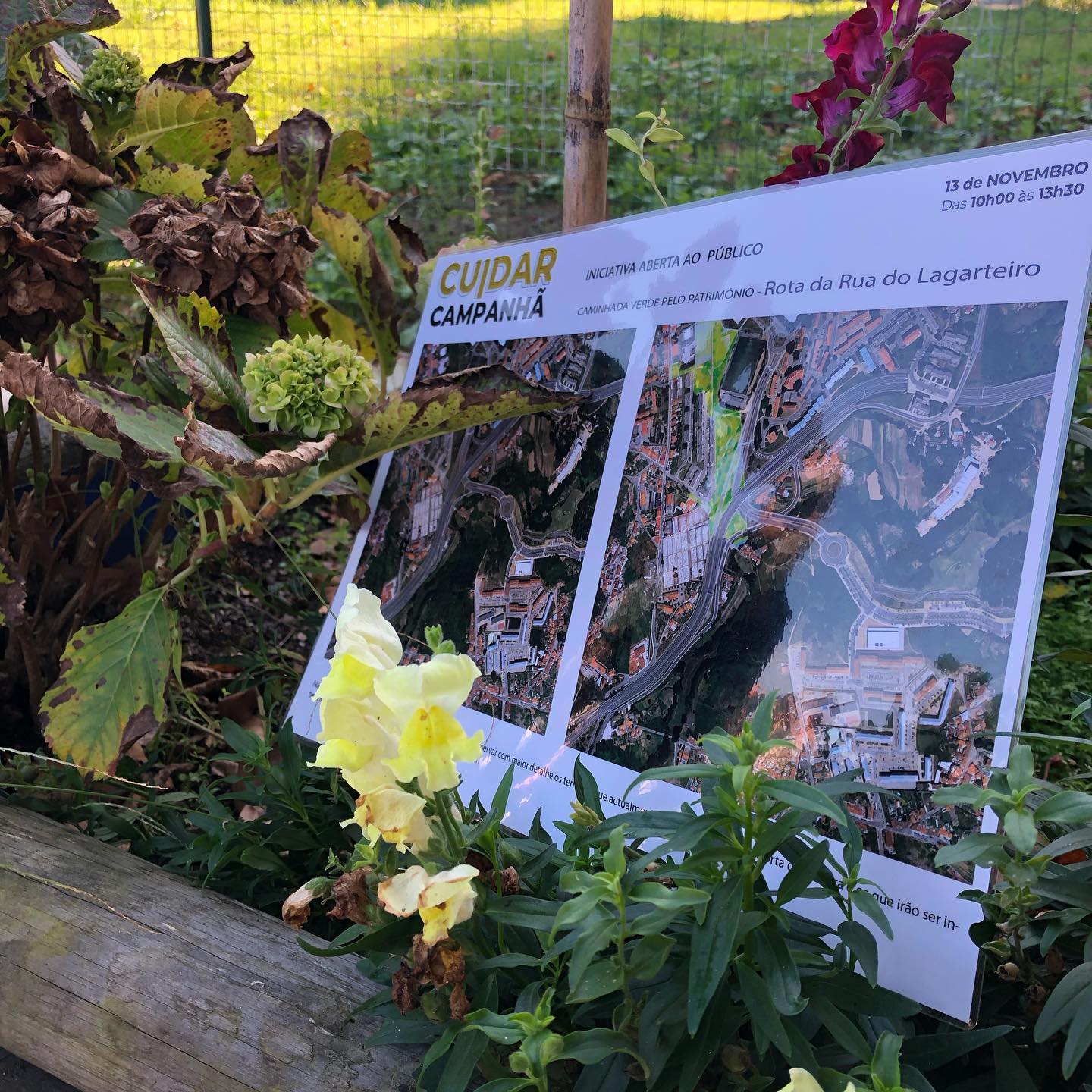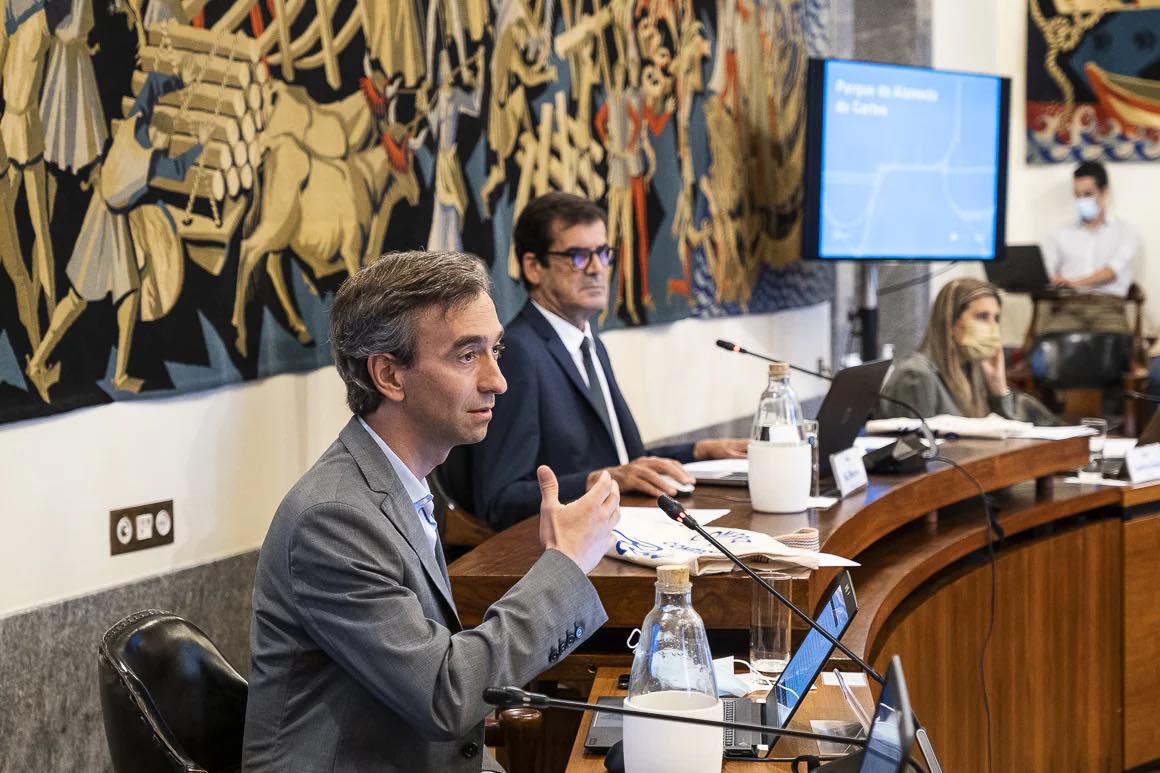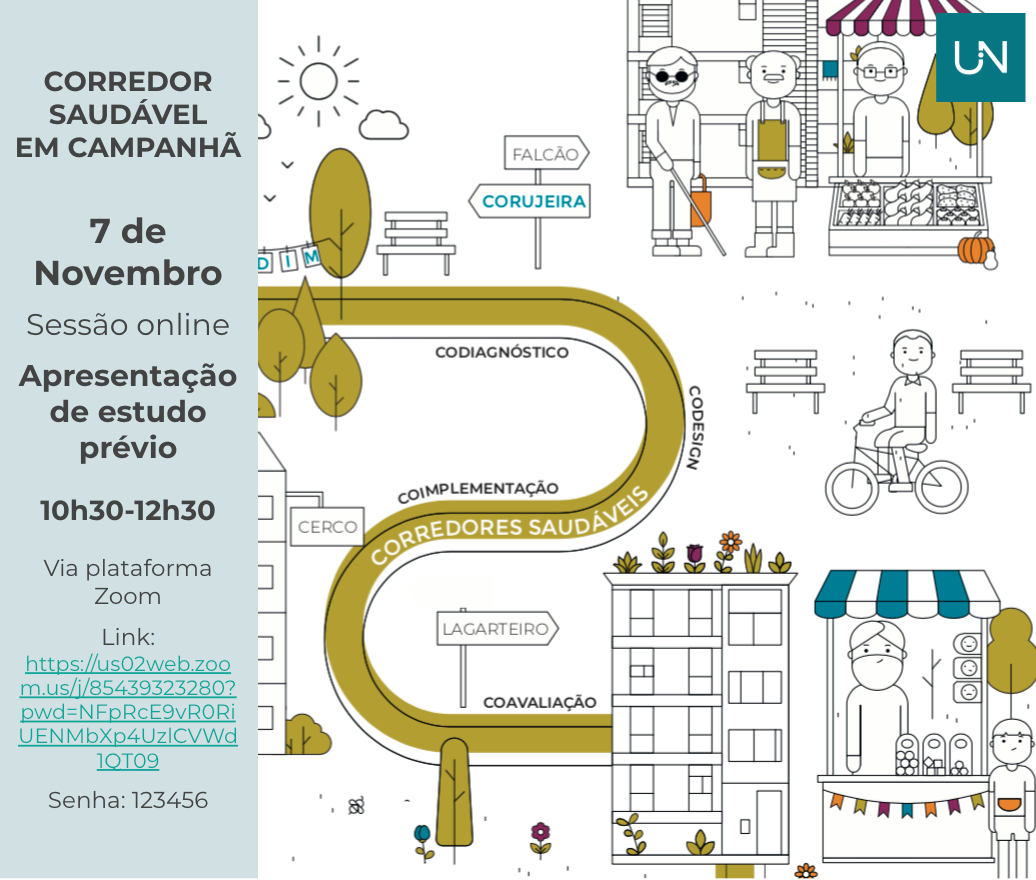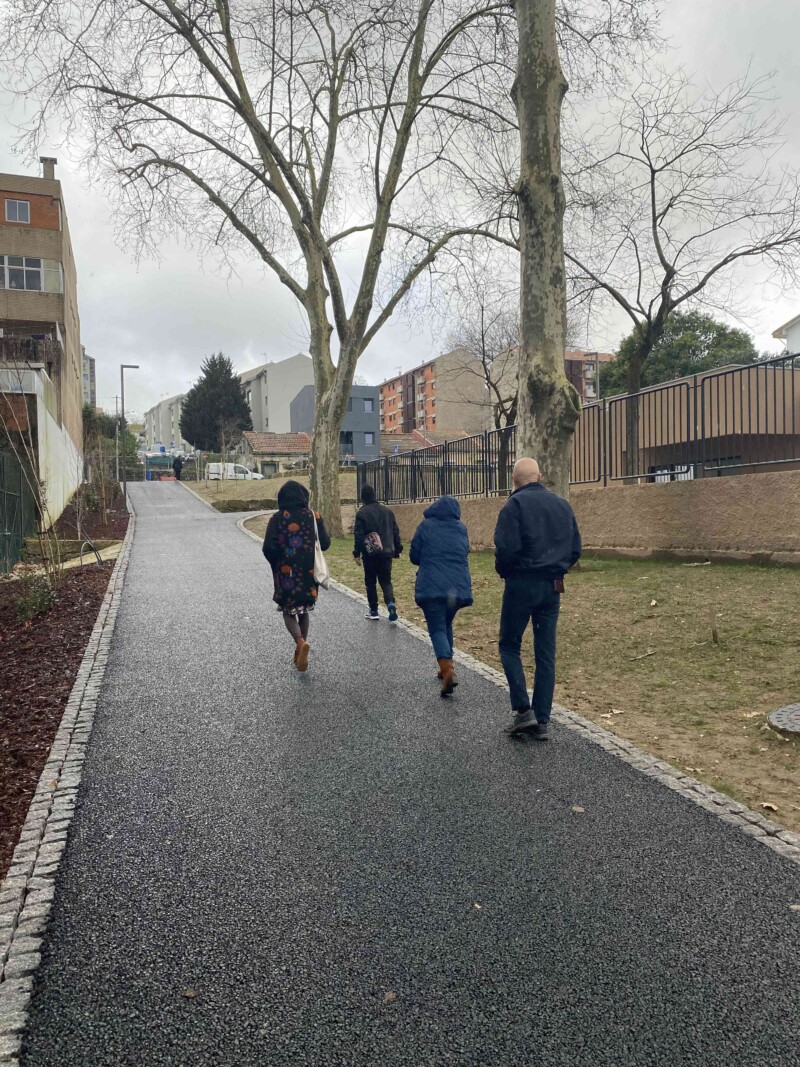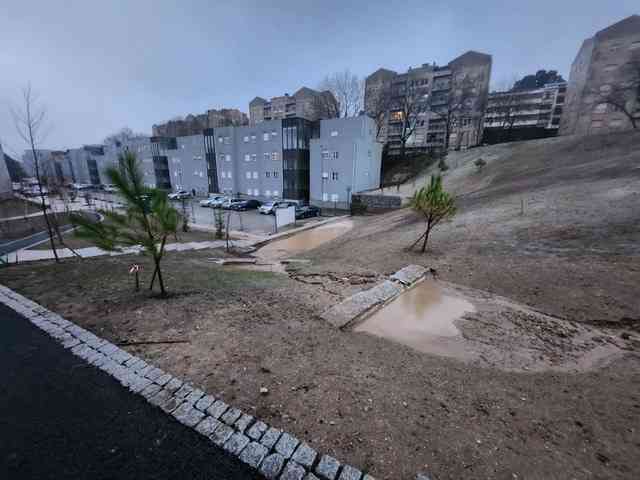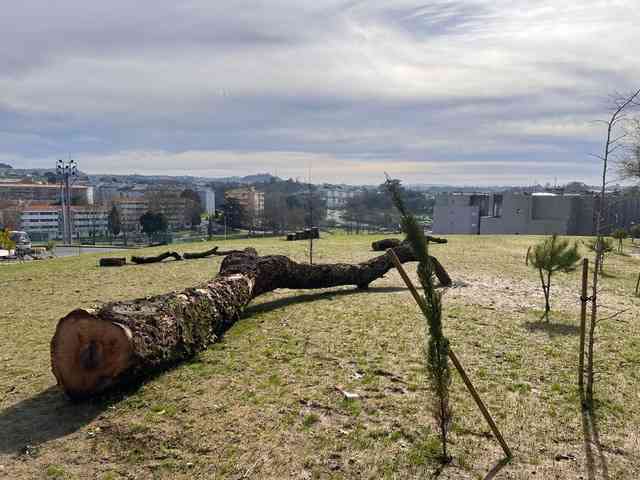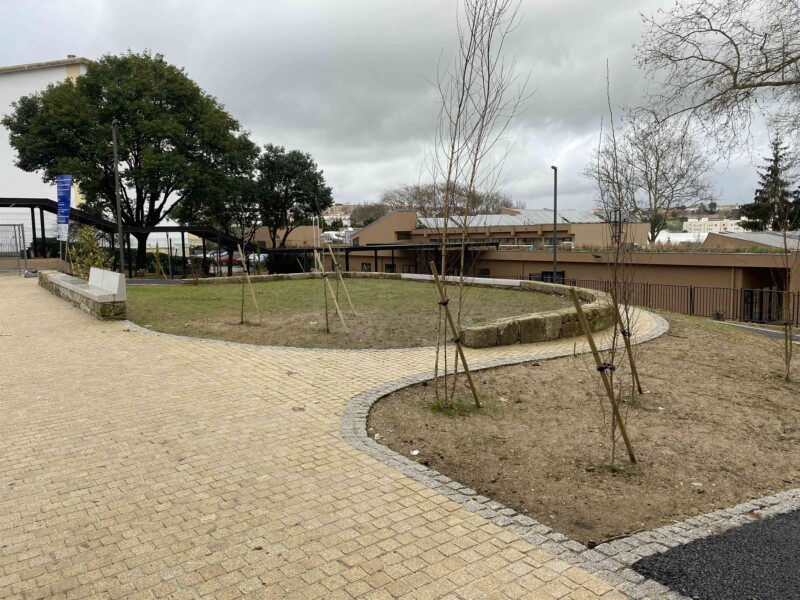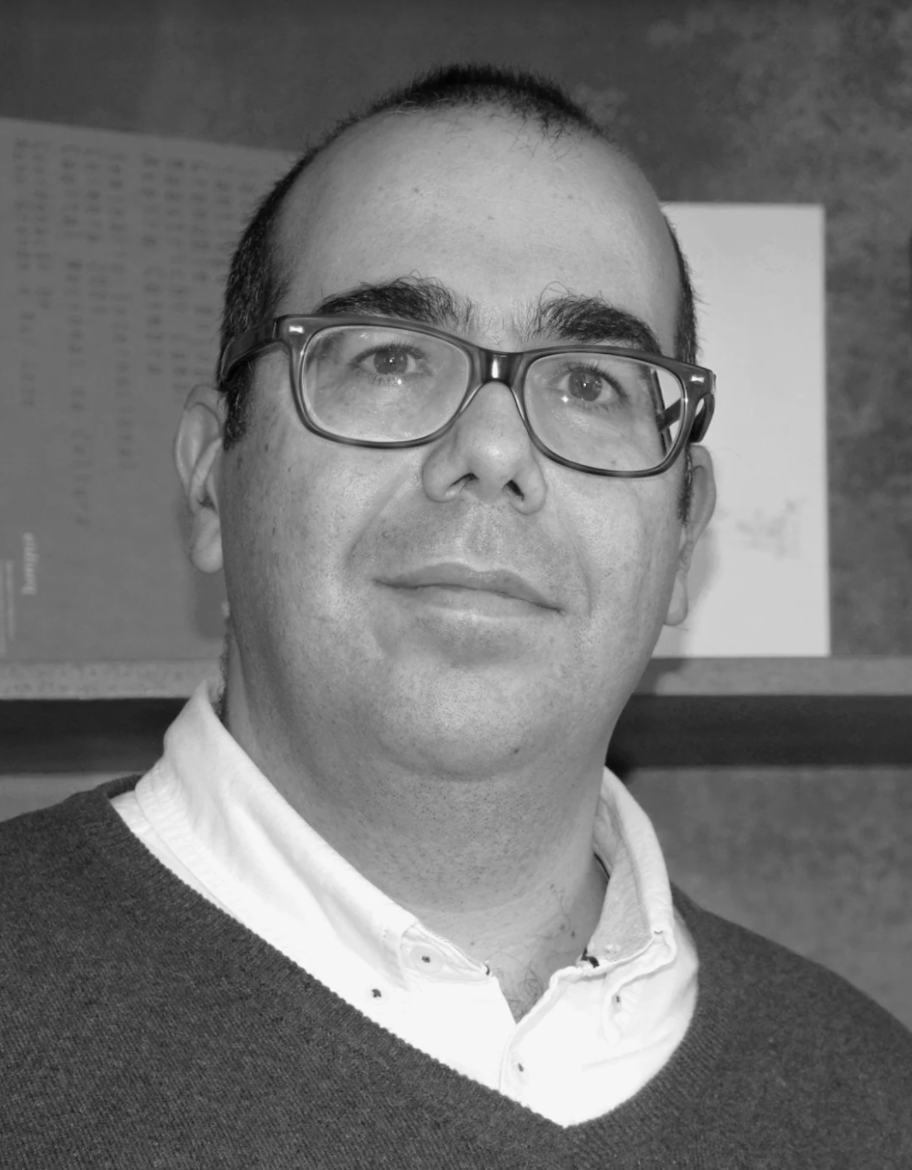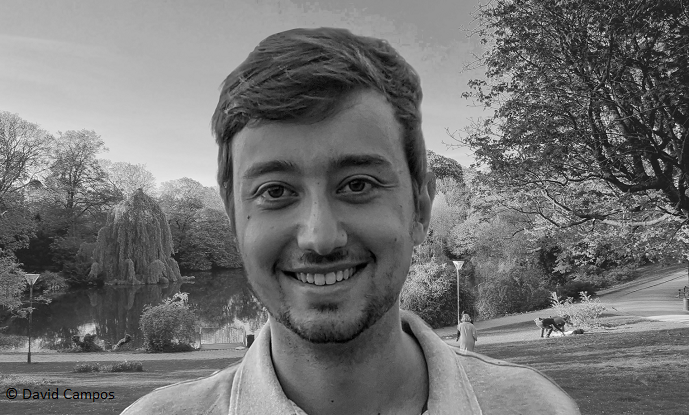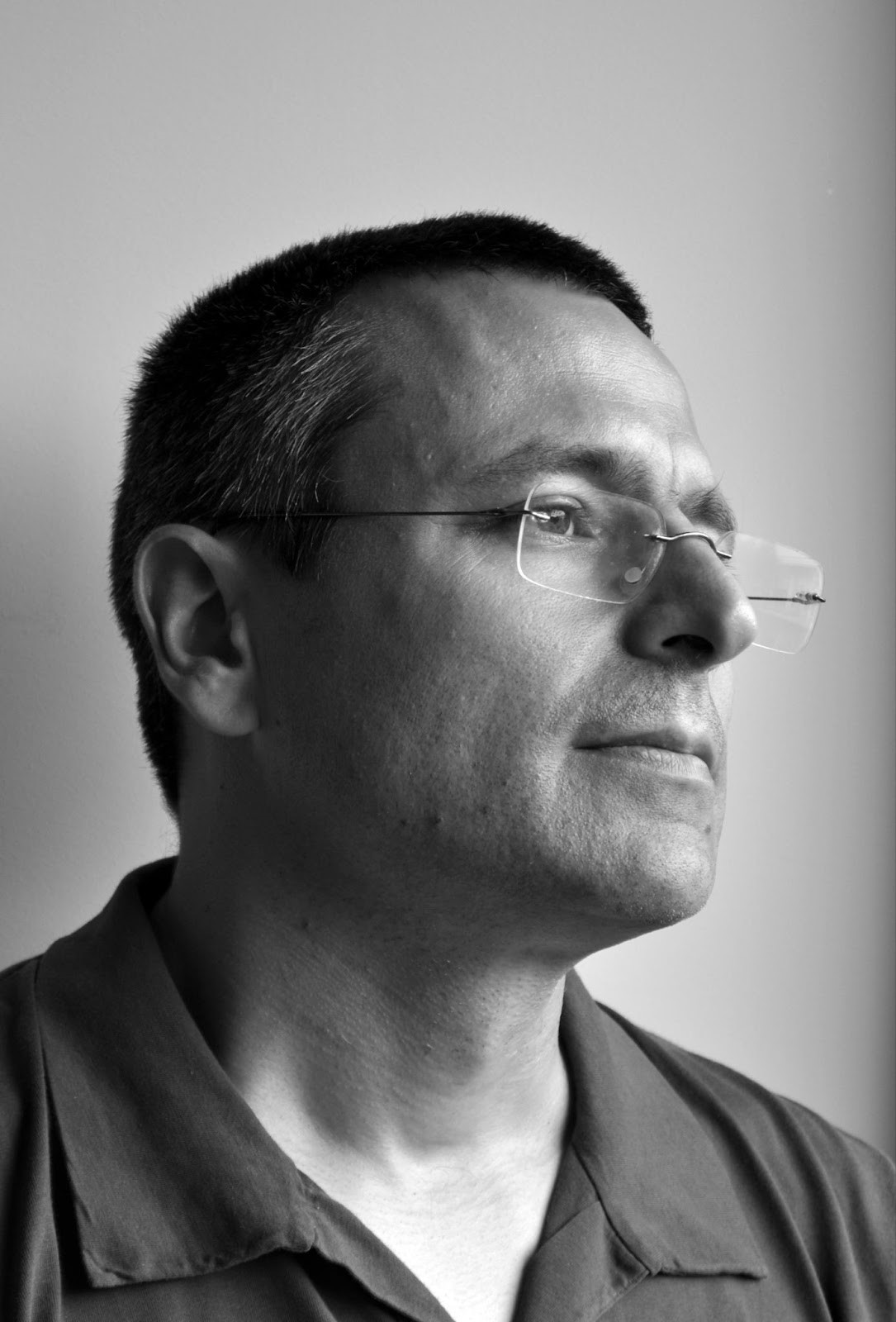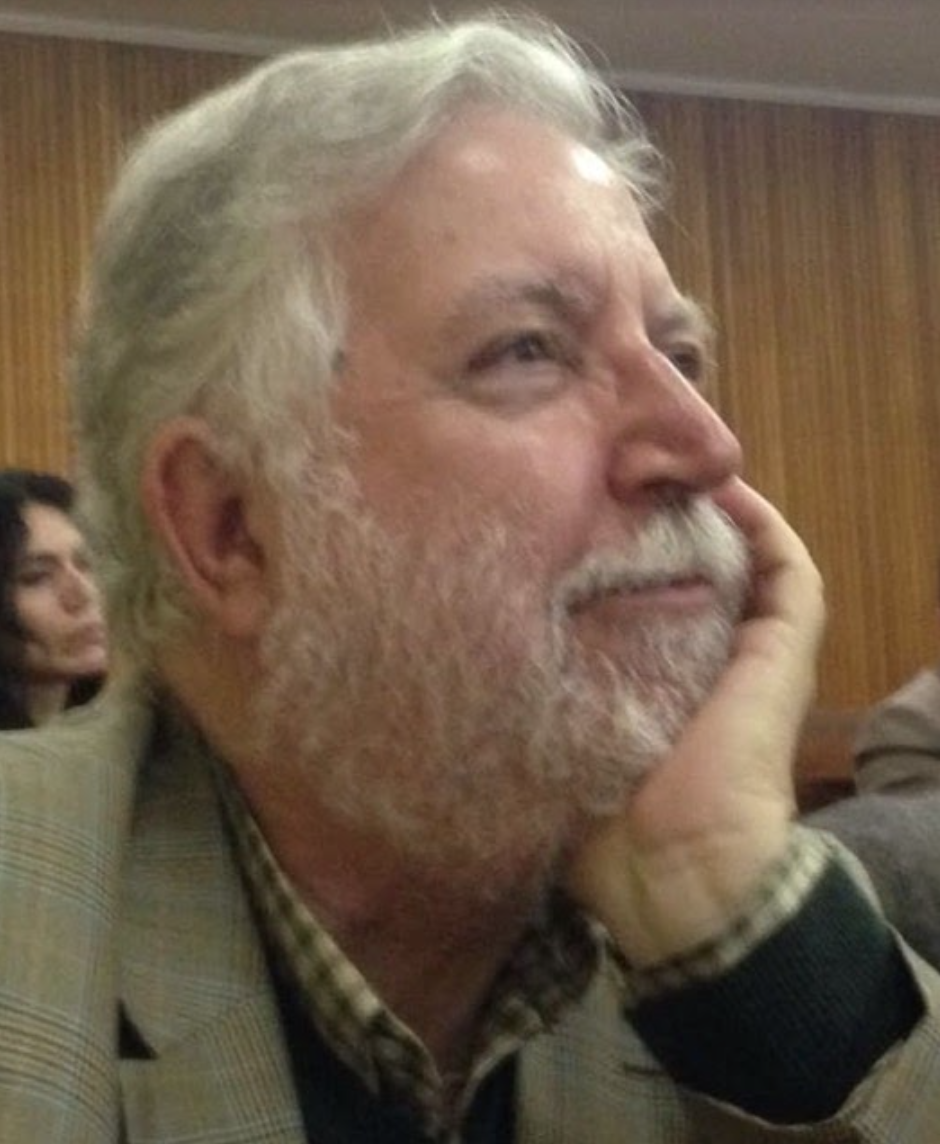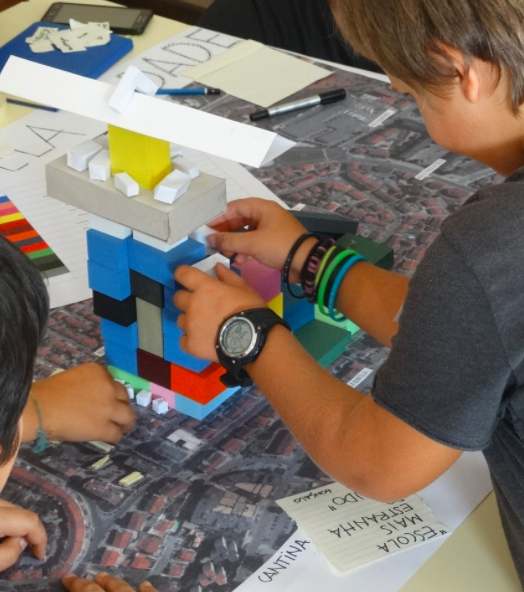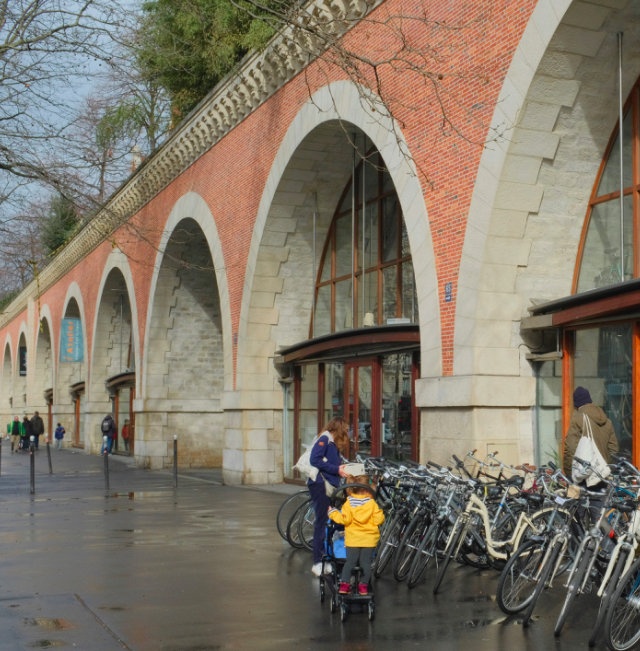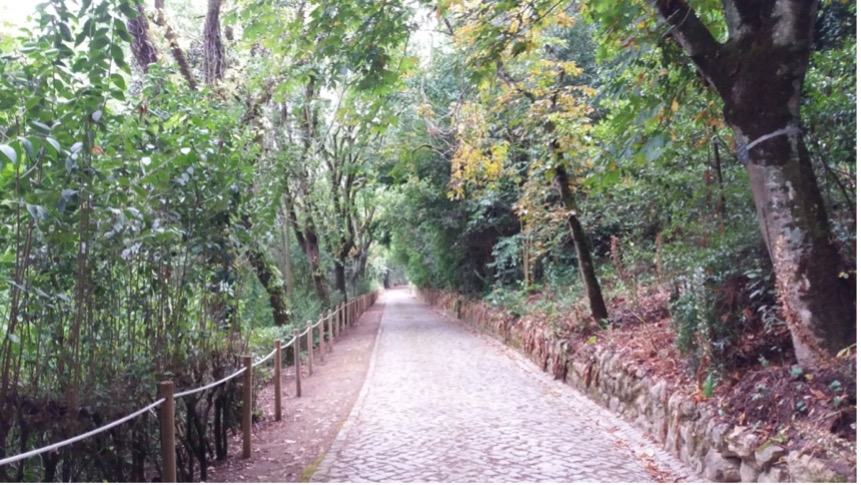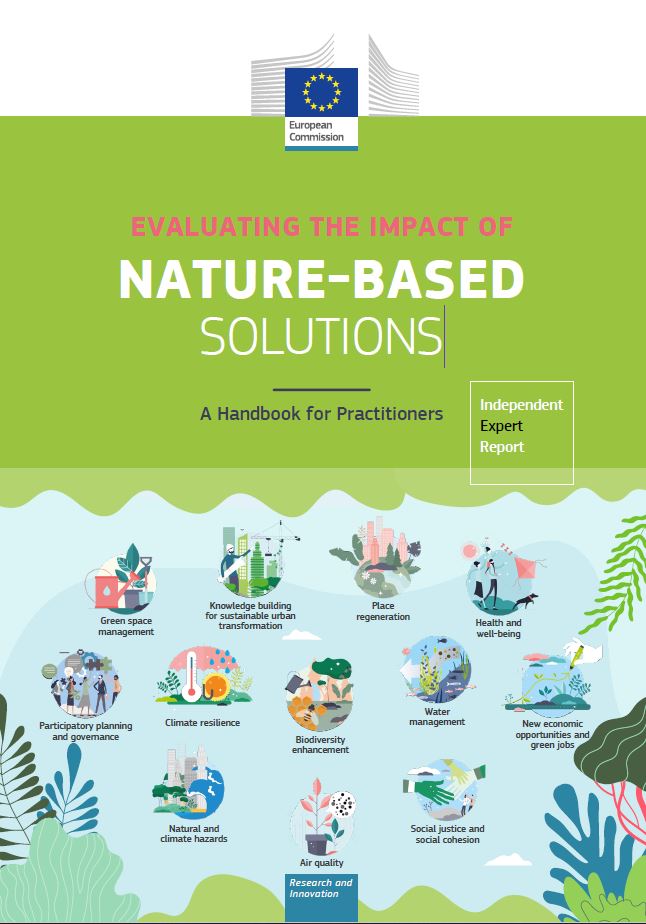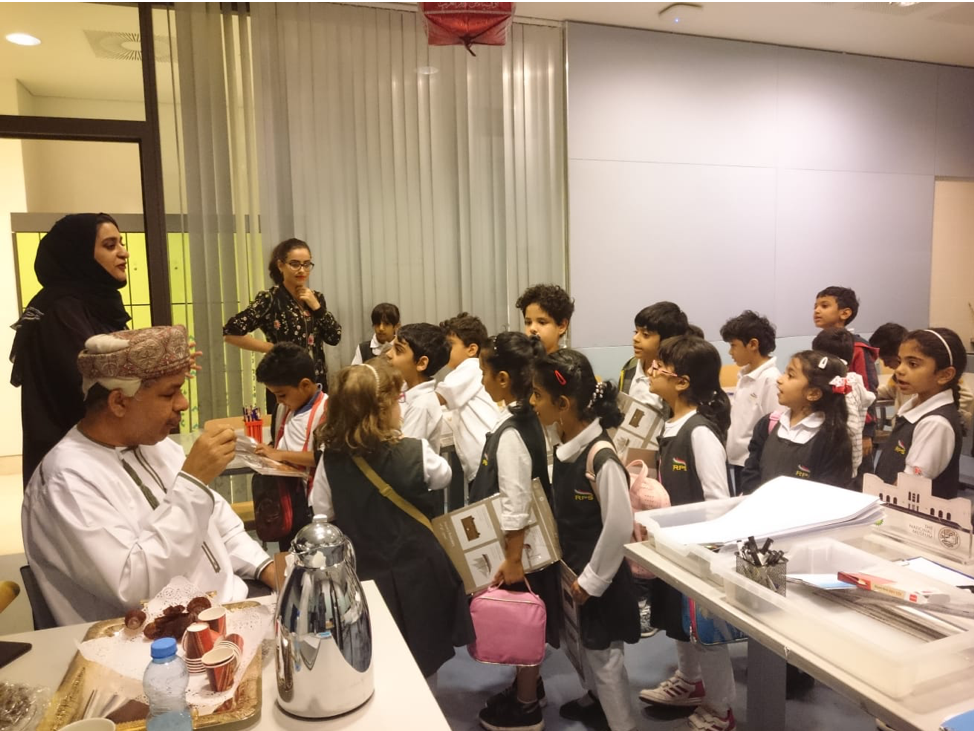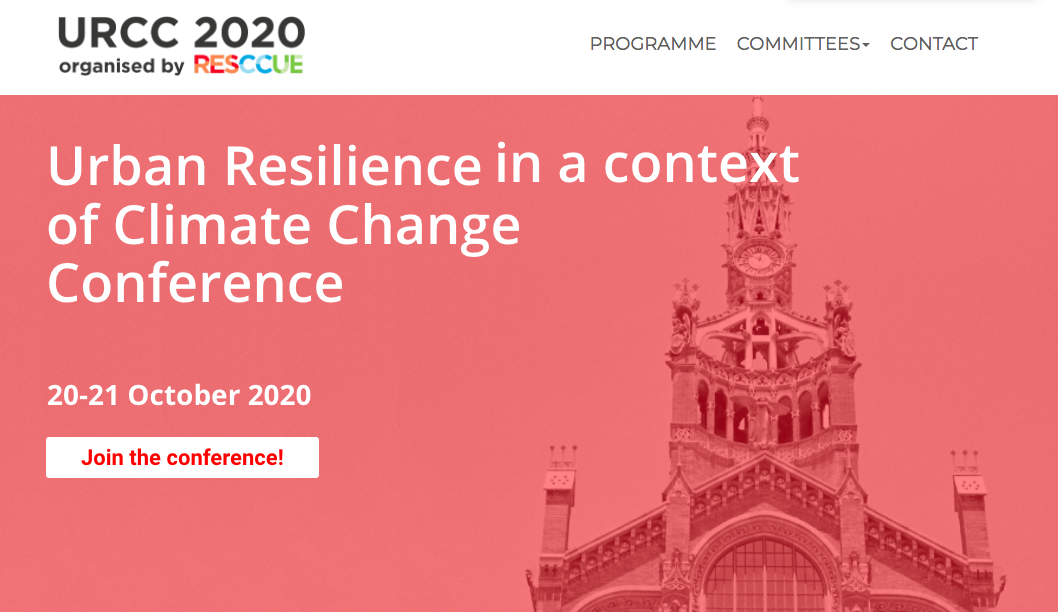In the summer of 2018, the district of Campanhã in Porto embarked on a journey to transform its urban landscape as part of the URBiNAT project. During the Kick-off of URBiNAT, consortium members from across Europe traveled from Coimbra to the city of Porto, to participate in a one day event on Porto’s NBS strategy and to visit the main intervention area.
The project aimed to create a ‘Healthy Corridor‘ in which Nature-Based Solutions that had been co-selected by local citizens were linked together. Over the ensuing five years this initiative has transformed into a laboratory or ideas and co-creation, bringing together a diverse group of stakeholders, including researchers from CES (University of Coimbra), Biopolis, GUDA, the City of Porto, and many enthusiastic citizens, alongside valuable inputs from URBiNAT consortium members across Europe.
The Vision:
The Healthy Corridor was envisioned as more than just a physical space. It aimed to be a living, breathing testament to sustainable urban living, integrating nature-based solutions (NBS) to enhance community well-being. The goal was to foster a healthier, more inclusive, and resilient urban environment that could be a model for cities worldwide.
The Journey of Co-Creation:
From the onset, the project was marked by its participatory approach. Researchers and city planners worked hand-in-hand with the local community, ensuring that the voices of Campanhã’s residents were not just heard but were instrumental in shaping the project’s direction.
Key Milestones:
- Initial Workshops (2018-2019): These sessions were crucial in gathering community input and setting the foundation for the project. Citizens expressed their needs and visions, guiding the initial designs and plans.
- Implementation of NBS (2020-2022): The corridor began to take shape, with the integration of green spaces, sustainable mobility solutions, and community-focused amenities, all reflecting the community’s aspirations.
- Ongoing Engagement and Refinement (2023-2024): Continuous feedback loops ensured that the corridor evolved to meet changing community needs, with an emphasis on inclusivity and accessibility.
The Role of Collaborators:
The success of the Healthy Corridor owes much to the diverse range of collaborators. CES researchers brought academic rigor and innovative thinking; Biopolis and GUDA provided technical expertise in NBS and urban design. The City of Porto played a pivotal role in facilitating the project, ensuring alignment with broader urban development goals. The URBiNAT consortium members contributed a European perspective, enriching the project with their varied experiences and insights.
Outcomes and Impact
Today, the Healthy Corridor stands as a vibrant, green artery in the heart of Campanhã, bustling with life and activity. It’s a place where community, sustainability, and innovation intersect, offering a blueprint for future urban regeneration projects. The corridor has not only improved the district’s aesthetic and environmental quality but has also become a hub for social interaction, fostering a stronger sense of community.
The co-creation of the Healthy Corridor in Campanhã can be seen as a testament to the power of collaborative urban design. It showcases how community involvement, backed by multidisciplinary expertise, can lead to sustainable, impactful urban transformations. As we reflect on this journey from 2018 to 2024, it’s clear that the legacy of this project will resonate far beyond the borders of Porto.
CampMarket
The Campmarket initiative in Porto is a good example of community engagement and sustainability. This initiative, held in the district of Campanhã, represents an evolution in community-led activities, with the 24th edition of being organized independently by the local community for the first time. This transition demonstrates the viability of co-governance models that have been a focus of the URBiNAT project for the past five years.
A key feature of this initiative is the introduction of a new solidarity coin, called ‘the tree’, which was initially used by children for toy exchanges. The aim is to expand this initiative to regular transactions, promoting sustainability and strengthening community bonds by encouraging local exchange and support. The Campmarket has become a community-based project that reflects a broader shift towards sustainable urban living, where citizens actively contribute to their environment.
The URBiNAT project, funded by the European Union’s Horizon 2020 research and innovation programme, focuses on the co-creation of Healthy Corridors and inclusive communities, emphasizing the importance of citizen participation and co-governance. The success of Campmarket as a community-driven endeavour illustrates the project’s lasting impact on fostering self-sufficient and engaged communities
Campanh’UP platform
The Campanh’UP platform is a social and community communication platform designed to activate mobilization and participation processes through young communicators. It aims to promote co-created and co-dynamized interactions involving people and institutions in the Campanhã area, focusing on integrated parish development. The platform encourages cultural activities, supports training processes, initiates co-creation efforts, and contributes to the sustainability of participatory processes.
The platform has been co-created with local associations, including OUPA and APPC, and underwent an experimentation phase in 2020 before being launched in 2021. It seeks to stimulate the community’s involvement in inclusive regeneration processes through community and cultural communication. The initiative has already created spaces for collective expression, discussion, and action among different groups, although it is not yet accessible online. The project’s executive committee includes Visões Úteis, a member of the Anna Lindh Foundation’s Portuguese Network, and other partners such as Fios e Desafios, CES – Centro de Estudos Sociais, and APPC – Associação do Porto de Paralisia Cerebral.
The platform is part of the broader “Novos Percursos para Campanhã” initiative and was conceived within the framework of the URBiNAT project, emphasizing local participation and fostering co-created communication and interaction among local taskforce partners and stakeholders
Germinário urban garden, “walking with Yoga” and “Educational Gardens”
The Germinário urban garden, along with initiatives like “Walking with Yoga” and “Educational Gardens,” are part of a broader movement in urban environments to connect residents with nature and promote sustainable practices. These projects, often designed and implemented with the help of institutions like the Institute for Advanced Architecture of Catalonia (IAAC) in Barcelona, focus on creating green spaces within urban areas that serve educational and recreational purposes.
In Barcelona, educational urban gardens are part of projects like Pla BUITS and the Eje Montaña Project which serve to promote social participation, sustainable agriculture, and environmental awareness. They provide spaces where citizens can exchange knowledge and culture, contributing to the creation of a sustainable city. These initiatives are seen as fundamental to the overall strategy of enhancing urban nature and biodiversity, as well as fostering community engagement.
Similarly, the Germinário urban garden and initiatives like “Walking with Yoga” serve similar purposes, integrating nature into the urban fabric, offering educational opportunities, and enhancing the wellbeing of residents. These projects demonstrate the increasing importance of urban gardens as multifunctional green spaces, promoting biodiversity, ecosystem services, and social cohesion in cities.
NBS for primary schools as education gardens
Nature Based Solutions have been implemented in six primary schools through a participatory process involving the children and teachers together with IAAC (researcher and students) and the local experts. The idea is to implement NBS as horizontal and vertical design solutions, that can provide new areas for pedagogical gardening activities as well as for the renaturalization of the space.
Co-development and Co-implementation of a Healthy Corridor urban plan for Porto
The preparation of an urban plan for the district of Campanhã, integrating multiple nature-based solutions (NBS), involved a comprehensive and multi-faceted co-creation approach. Central to this process was the goal of creating a harmonious and sustainable urban environment. The plan commenced with an analysis of the district’s current ecological, social, and economic landscape. Engaging with local communities, experts, and stakeholders, the plan sought to understand the specific needs and challenges of Campanhã. This collaborative input informed the selection and design of NBS, as listed in the URBiNAT NBS Catalogue, such as urban green spaces, biodiversity corridors, cycle paths, and sustainable water management systems. These solutions were integrated into the urban infrastructure, ensuring they complemented existing structures and enhanced the overall quality of life in the district. The plan also emphasized adaptability, allowing for future environmental and community needs.
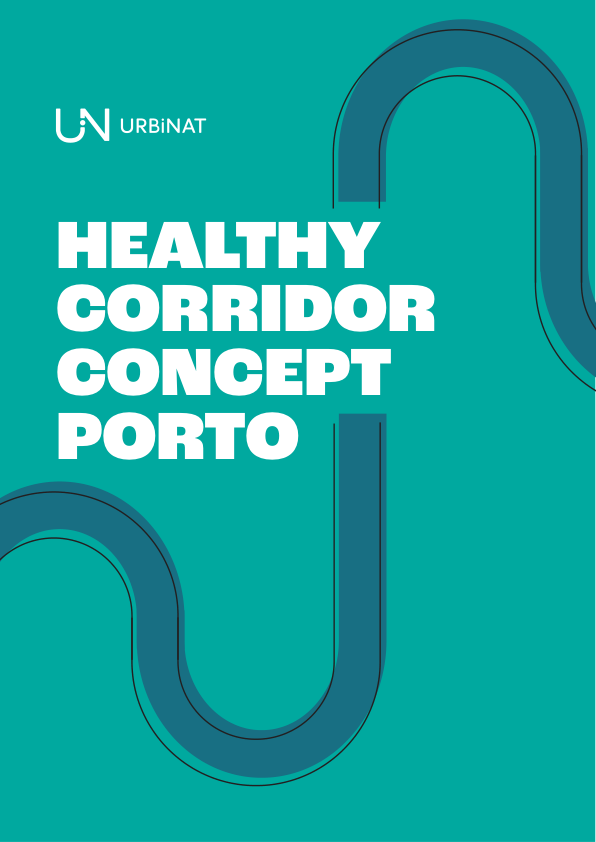
URBiNAT Urban Plan for Porto
4.2: Healthy Corridor Concept - PORTO
In Porto city, Campanhã parish was identified as one of the priority areas for urban regeneration aiming at a more sustainable improvement of local living conditions. This area faces severe socio-economic challenges territorial aggravated by isolation, due to lack of accessibility, safety, feeling of security and poor overall conditions of the urban space. Despite these challenges, this area is especially rich in green areas and vacant lots that represent unique opportunities for urban regeneration to tackle the identified issues, especially through the use of multifunctional nature-based solutions (NBS). The potential for improvement in this area is fairly recognized by the number of strategic investments that the Municipality of Porto is planning for the area.
March 2024: Porto to host three-day event to mark end of URBiNAT project
From March 7th to 9th, 2024, Porto will host a three-day event to mark the conclusion of the URBiNAT project. This event will bring together consortium members from across Europe, the representatives of sister Horizon 2020 projects, and various other parties and local stakeholders who have been instrumental in the co-creation of the Healthy Corridor in Campanhã.
The gathering aims to celebrate the project’s successes, share experiences and insights, and showcase the transformative impact of the initiative on the Campanhã district. This event will not only serve as a platform for reflection on the journey of the URBiNAT project but also as an opportunity to discuss future directions and potential for similar projects in urban development and sustainable living.


